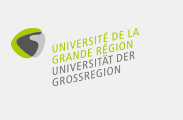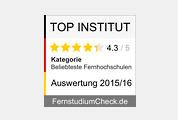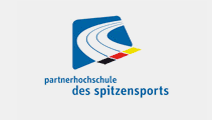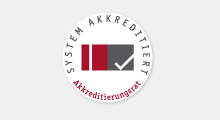Table of content:
Algorithmic Accountability
Biological Analyses
Cognitive Science
Complex Network Analysis
Network Analysis Literacy

Move to the top
Move to the top
Move to the top

Move to the top
Move to the top
Algorithmic Accountability
Biological Analyses
Cognitive Science
Complex Network Analysis
Network Analysis Literacy
Algorithmic Accountability
Deciding about, by and together with algorithmic decision making systems

Artificial intelligence(“AI”), according to its godfather Alan Turing,is “the science and engineering of making intelligent machines, especially intelligent computer programs.”AI programs are of varying sophistication, with the most advanced employing complex “machine learning” techniques. For this, machine learning algorithmsthat are stored in decision trees or neutral networksare used to deduce decision rulesfrom the input data(algorithmic decision making; “ADM”). Over time, the AI tool improves itself by learning from its past decisions, correct or incorrect.
The overarching ambitof our project is to examine whether there are limitationsto this kind of ADM, within the range of AIsystemsused today. ADM systems are becoming increasingly popular, especially within notoriously cash-strapped criminal justice systems(“CJS”; to be used for both the singular and plural). Within western CJS, especially those of the USA and the UK, these toolsare used atvarious stages of the process to assess the risk a particular individual poses to the public (e.g. at bail, parole, or at sentencing).In the USA, major civil liberties unions such as the ACLU have even advocated their use atall stages of the criminal process to avoid possible human biases.
That increasing popularity of ADM within the CJS, coupled with the extremely grave potential consequences for individuals when it comes to errors of any CJS decision, makes the CJS an ideal research area to compare the following: on the one hand the various ways in whichhumans alone make decisions about other humans compared with how ADM systems alone make the same decisions about humans, with the ways in which humans in conjunction with ADM systems take decisions about other humans. Avery closely related question we wish to analyze is why and how a given polity decides whether and how to use an ADM systemwithin its CJS
The overarching ambitof our project is to examine whether there are limitationsto this kind of ADM, within the range of AIsystemsused today. ADM systems are becoming increasingly popular, especially within notoriously cash-strapped criminal justice systems(“CJS”; to be used for both the singular and plural). Within western CJS, especially those of the USA and the UK, these toolsare used atvarious stages of the process to assess the risk a particular individual poses to the public (e.g. at bail, parole, or at sentencing).In the USA, major civil liberties unions such as the ACLU have even advocated their use atall stages of the criminal process to avoid possible human biases.
That increasing popularity of ADM within the CJS, coupled with the extremely grave potential consequences for individuals when it comes to errors of any CJS decision, makes the CJS an ideal research area to compare the following: on the one hand the various ways in whichhumans alone make decisions about other humans compared with how ADM systems alone make the same decisions about humans, with the ways in which humans in conjunction with ADM systems take decisions about other humans. Avery closely related question we wish to analyze is why and how a given polity decides whether and how to use an ADM systemwithin its CJS
Selected Publications and Press Coverage
Datenspende Project

When you search in Google, do you see the same results as your work colleagues, your friends or your family?
If not, why is that so? Does Google personalize the search results? If so, upon which criteria?
What topics are driving the Google Search and Google News results when it comes to the 2017 German federal election?
There is much speculation about the influence that search engines have on the information we take note of. In fact, we know very little about how they weight and display information. But search engines are so central to our society that we need a way to independently investigate them. We did it thanks to a crowdsourcing project, the Datenspende BTW17.
There is much speculation about the influence that search engines have on the information we take note of. In fact, we know very little about how they weight and display information. But search engines are so central to our society that we need a way to independently investigate them. We did it thanks to a crowdsourcing project, the Datenspende BTW17.
Selected Publications and Press Coverage
Move to the top
Biological Analyses
Global miRNA analysis

In this cooperation with scientists from the German Cancer Research Center (DKFZ, Heidelberg)
we contributed a new method to analyse noisy biological high-throughput data. In this case, Özgür et al.
were interested in the influence of so-called microRNAs on the level of certain proteins. These proteins regulate the
cell cycle in a very malicious breast cancer type. Since microRNA regulation is in general very mild, it is difficult to
decide whether a given change in a protein's level is for real or just a random fluctuation. We attacked this problem
by assessing the statistical significance of co-regulations, i.e., we checked whether pairs of proteins where
significantly often co-regulated by microRNAs.
Selected Publications
- Stefan Uhlmann, Heiko Mannsperger, Jitao David Zhang, Emöke-Ágnes Horvát, Christian Schmidt, Moritz Küblbeck, Frauke Henjes, Aoife Ward, Ulrich Tschulena, Katharina Zweig, Ulrike Korf, Stefan Wiemann, and Özgür Sahin: "Global microRNA level regulation of EGFR-driven cell-cycle protein network in breast cancer", Molecular Systems Biology 8:569, doi: 10.1038/msb.2012.2, 2012
Press Coverage
- The article was featured on nature.com and accompanied by a 'news and views' article by Marcos Malumbres
- Press release of the Heidelberg university
- Nationales Genomforschungsnetzwerk
Move to the top
Cognitive Science
Understanding human navigation in complex networks

Cognitive science is one of the upcoming themes in my work group. A first project in that direction was conducted together with
Sudarsan Iyengar and his colleagues on human navigation in complex networks.
In this cooperation we worked on analyzing how people learn to navigage in a highly abstract, word-based network.
Selected Publications
- Sudarshan R. Iyengar, K.A. Zweig, Abhiram Natarajan, and C.E. Veni Madhavan: "A network analysis approach to understand the human-wayfinding problem", Proceedings of the 33rd annual meeting of the Cognitive Science Society, 2011
Press Coverage
- RNZ (local newspaper)
- Psychologie aktuell
- Article in the journal of the Heidelberg university
- Press release of the Heidelberg university
Move to the top
Complex Network Analysis
Local Identification of Central Nodes, Clusters, and Network Motifs in Very Large Complex Networks (DFG SPP 1736)

The analysis of complex networks relies mostly on three different approaches:
the identification of central nodes, the assignment of nodes to one or more groups of topologically similar other nodes, so-called clusters,
and the identification of subgraphs occurring more often than expected by chance.
Behind all of these approaches there are at least a dozen functions and measures to instantiate them, which all follow the same logic, which is, however, not always clearly defined.
All of these approaches are today based on methods that make use of global properties of the graph like the distance between all pairs of nodes (O(nm+n^2 log n)),
global ranking of similar node or edge pairs (O(n^2), or the comparison with random graph models of the same structure as the observed one (O(m log m)).
Thus, none of these fundamental approaches can be directly transferred to the analysis of very large complex networks as needed today.
In this project, we will develop a model of local versions of these three approaches, which fundamentally describes how a corresponding measure can be transformed into a local variant of itself. The basic method is to develop algorithms based on graph theoretical reasoning where the algorithm engineering is informed by machine learning to include real-world properties of the data and real-life behavior of hardware. The newly developed measures and models will be put into praxis and their usefullness will be evaluated on big data of RIOT games, a USA-based computer game company.
In this project, we will develop a model of local versions of these three approaches, which fundamentally describes how a corresponding measure can be transformed into a local variant of itself. The basic method is to develop algorithms based on graph theoretical reasoning where the algorithm engineering is informed by machine learning to include real-world properties of the data and real-life behavior of hardware. The newly developed measures and models will be put into praxis and their usefullness will be evaluated on big data of RIOT games, a USA-based computer game company.
One plus one makes three for social networks

In this cooperation with Michael Hanselmann and Fred Hamprecht we explored how much a typical social network platform (like Facebook) can infer about relationships between non-members.
Based on the information of who knows whom on the platform and a list of contacts to non-members we estimate that a platform like facebook can infer about 40% of the connections between non-members.
Selected Publications
- Emöke-Ágnes Horvát, Michael Hanselmann, Katharina Zweig, and Fred Hamprecht: One plus one makes three (for social networks), PLoS ONE 7(4): e34740. doi:10.1371/journal.pone.0034740, 2012.
Press Coverage
- Germany
- heise.de
- SpiegelOnline
- Standard (Österreich)
- DRadio Wissen (Podcast); Interview with Jürgen Kuri (c't, Germany's most renowned computer magazine) on shadow profiles. Here is the direct link to the podcast.
- Scinexx, the online science magazine of Springer
- Press release of the Heidelberg university
- International press:
Move to the top
Network Literacy
Network Analysis Literacy

Network analysis literacy is concerned with when to use which method to analyze networks.
The field has seen many methods being proposed in these areas - but not many of them have been evaluated with respect to some ground truth.
We propose that the network analysis community should agree on benchmark data sets and ground truth or gold standard solutions to show that the proposed algorithms
can be tested with regard to their quality.
Selected Publications
- Katharina Anna Zweig: Network Analysis Literacy - A Practical Approach to the Analysis of Networks. Lecture Notes in Social Networks, Springer 2016, ISBN 978-3-7091-0740-9, pp. 3-485
Move to the top



![[logo of the department of CS]](/en/logos/logo_fbi_167x60.png)




